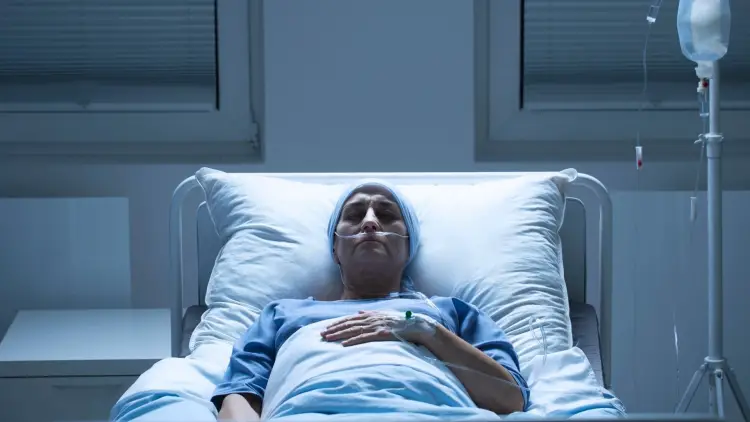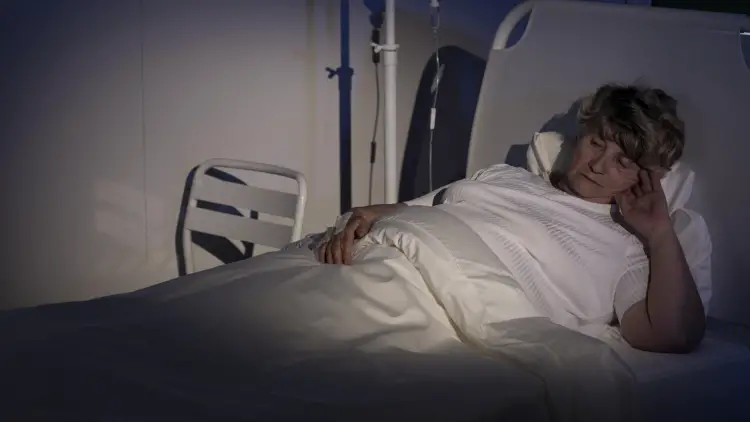Palliative care vs hospice care is something everyone needs to know about long before it is needed. All the different aspects of this topic need to be considered and factored into the picture of what is happening within the context of the family.
I’ve tracked legislative bills before that have directed coverage of palliative care. The responses to the bill were interesting, noting that while “palliative care” was not identified as a specifically covered service, all of the service that make up palliative care were covered individually. Add “hospice” to the mix and suddenly nobody knows what word describe what group of services.
This article will give you a look into the topic that you will not read about on other sites, especially those that have much to gain financially from the situation. It’s not meant to imply that all types of palliative care and hospice care are questionable. Used properly, there are times when these services are extremely helpful.
Why is End of Life Care a Taboo Subject?
Palliative care and hospice care is a difficult subject to talk or read about if you have a loving member of your family that has a terminal disease. The idea of approaching the topic of impending death is quite frankly, a bit scary and filled with fear. And depending on the family member, the part of impending death may not be able to be discussed due to declining brain health, mental health, or desire not to address it.
In situations like these, decisions are made on whether there should be active intervention or not. Active intervention means moving forward with a treatment that is needed for the specific disease. For example, is the health condition one that needs surgery, drug therapy, chemotherapy, life support, or any other type of treatment? If so, these are active interventions that take care of what is happening from a medical point of view.
But do you see that the big elephant in the room has not been addressed with active intervention? Who’s talking about the everyday needs of the person? Spiritual needs seem logically the biggest elephant but there are daily living needs that are in a large untouched box.
The emotional support the person needs could be discussed, even if it’s only someone sitting by their bedside talking about things of the past or present. Who’s addressing the social needs, financial needs, mental health needs, need for comfort during times of pain, breathing problems, sleep problems, or nausea and vomiting? This type of support is palliative care.
During the active intervention, the inevitable may occur. The loved member of the family may pass away.
But maybe there’s a better way to go through this process. And that’s where palliative care vs hospice care come into the picture. First let’s go through palliative care and then hospice care.
Palliative Care vs Hospice Care
Knowing the difference between these two types of care is important. Unfortunately, a few things in life are definite, and death is one of them. How and when each of us goes is often out of our hands, and the need for one of these types of care may come into play. Disease and accidents are also probable in many people’s lives.
Here’s a quick chart that explains palliative care vs hospice care.
| Palliative Care | Hospice Care | |
| Considers the comfort of the patient | YES | YES |
| Reduces stress | YES | YES |
| Symptom relief | YES | YES |
| Pain reduction (morphine) | YES | YES |
| Social support | YES | YES |
| Physical support | YES | YES |
| Curative treatment | May occur at the same time | NO |
| Location | Hospital usually, may be in care home, intermediary facility | Home |
| Stage of disease | Any | Prognosis of death in 6 months |
| Spiritual support | YES | YES |
| Who pays for it | Insurance, self, sometimes Medicare and Medicaid | Medicare, Medicaid, private insurance |
This palliative care vs hospice care chart is one you can print out and put in your important documents so that you will have it when you need it.
What is Palliative Care?
Does palliative care mean death? Not necessarily. Someone with stage 1 or 2 cancer treatment may need it for a short-term. There are many questions to be answered, and perhaps a few palliative care examples are the best way to understand the scope of this topic.
Palliative care is not available for someone who is part of any clinical trial for their disease. It’s for those who have an illness that there’s no evidence that further treatment will be effective.
What is Palliative Care for Cancer?
When someone goes through active treatment for a disease they have, especially cancer, there’s a good chance that there are going to be side effects caused by that treatment. This is well known in the case of cancer, where chemotherapy and radiation cause nausea and vomiting, which affects the person’s nutritional status, weight, and length of life in the short and long term. Another side effect is long-term pain – yes, from the treatment itself.
Even surgeries for cancer cause issues that someone with cancer has to then deal with for the rest of his life. A common example is prostate surgery which may cause impotency for life, or a mastectomy, which will cause problems with self-esteem and relationships with one’s spouse, at least for a short time afterwards.
Palliative care for cancer will be care that addresses all these other things that are happening after the cancer treatment. The goal is to reduce the symptoms the person has, improve the quality of life in the days left in the life of the person, especially the short-term. The palliative care for cancer may be given regardless of the person’s age and stage of cancer. It doesn’t have to be reserved for those who are in the final stages of cancer.
Palliative care then is addressing things that normally may not be addressed by the medical profession. It’s only a good thing, right? Well, one of the questions people ask is why is palliative care bad? Here’s an example to explain the answer.
Example
Lucy was in her 30s, unmarried and came from a large family. She was diagnosed with a reproductive cancer that metastasized to other parts of her body. Her own mother was a nurse and knew the situation was grim. They began some palliative care measures at home and started having meetings with the family. Lacey had been a high profile person with a nice income for several years.
The meetings turned ugly. They were supposed to address impending death but Lucy had been taking measures to reverse her cancer. She had made the decision that cancer wasn’t going to take her out of this world. In fact, her metastases were shrinking week by week.
This had given her hope that she really could have a future without the cancer. Her mother was surprised by the positive results but held to the idea that she was going to die. Then her siblings started arguing that Lucy needed to give them her cherished personal belongings.
Instead of a positive meeting where Lucy’s emotional needs were discussed, the meetings turned to the family’s perceived needs. She cried for a long time in my office telling me how saddened and frustrated she was about this and how she did not trust her family anymore. The situation affected her deeply and her condition then took a turn for the worst. She passed away within about a month.
It didn’t have to be that way. Palliative care done right doesn’t leave the patient feeling like everyone is writing off their life and placing them in the grave long before necessary.
Palliative Care for Dementia
Another situation is palliative care for dementia. In this case, health professionals really have no way of predicting when the person will die. In fact, it is now thought that any prediction of death – six months, three months, two weeks, etc. is more of a curse than it is based on any type of reality or scientific evidence.
Telling someone they only have two weeks to live makes them prepare for that to be a reality. Usually, the health professional ‘curse’ affects someone with dementia less than it does someone with cancer.
Example
John married Kathy’s mother 40 years ago. He was a good father to Kathy over the years and she loved him dearly. Then throughout the years, Kathy’s mother passed away, leaving John alone. Kathy began taking care of him, but quickly found that he was too much to handle.
He had dementia and was experiencing Sundowner’s syndrome. It got to the point where she couldn’t offer him the extra support he needed at home. She began looking for a home that would be able to attend to his needs better.
The first home was only one he was there for three days, yet with all the fees, that “trip” ended up costing the family $4,000. He was in the second home for 15 days with a cost of $20,000, including pre-payments for the next month’s rent. She hopes now they will refund at least $6,000 of the money given for his palliative care and stay. But hope is never a plan for anything.
Although he had been receiving palliative care for dementia in that home, what was not considered was the depletion of the family’s financial reserves. It’s another case of why palliative care can be bad. The reality is that palliative care costs a lot, and the longer it is used, the more any finances saved up in life by the person are going only to these facilities and erasing a family legacy or inheritance.
What exactly is palliative care for dementia?
Palliative care for Alzheimer’s disease and dementia is specialized medical care for people living with dementia that is focused on symptom relief and stress relief. The goal is to improve quality of life for the patient and the family.
However, this is often viewed only from the perspective of what medical and social services can be provided with little concern about depleting the family fortune. The best solution is finding palliative care that preserves both the integrity of the patient, the family and the family’s finances. Anything less is questionable.
What is Palliative Care Nursing?
Palliative care nursing has a goal of preventing and relieving suffering and to support the best quality of life for patients and their families, regardless of the stage of the disease or the need for other therapies. Alleviating suffering is a primary goal.
For nurses, the physical, social, emotional and spiritual aspects of care are considered in palliative care. They work with patients who have potentially life-limiting illnesses – and their families to assess, diagnose and intervene to support or modify these different aspects.
Palliative care nursing takes time because the palliative nurse has to spend time learning about the patient and family, their values, beliefs, past experiences, and goals of all parties. The palliative nurse may also participate in the creation of the advanced directives, treatment choices and care at the time of death.
Stages of Palliative Care
The five stages of palliative care are:
1) Active Monitoring
This is a medical goal and it is one that is related to determining the type of medical treatment needed, which may change with time.
2) Symptom Management
The goal of this stage is to maintain quality of life as long as possible.
3) Disease Progression
When there’s no more expectation that medical treatment will help, the focus is on managing symptoms and supporting the family and the patient both.
4) End-of-Life
This is when death is imminent, and preparation for that time is the goal.
5) Bereavement
Coping with the loss is the goal of this stage.
What is Hospice Care?
Hospice care is called compassionate comfort care. It’s for those who have been given the prognosis of only having six months or less to live. There are some things that hospice cannot tell you, and when exactly the individual will pass is one of them. Hospice is based on relief from the symptoms that the patient is suffering, as well as any physical or mental stress.
Eligibility Differences
You should know that there’s a difference between whether or not you can get insurance benefits for these two types of care.
Palliative Care Eligibility: Palliative care may be started at any time, as determined by the discretion of the doctor and patient. The illness does not have to be a terminal disease such as cancer with an expectation of death.
Hospice Eligibility: Hospice eligibility is different. It requires that two physicians believe – and certify – that there is less than six months to live if the usual course of a disease is followed.
FAQs
Who pays for palliative care?
Medicare, Medicaid, and private insurance pays 100% of hospice care costs. Prescription drugs, medical equipment, nursing, social services, visits by chaplains, 24/7 access to care and grief support are services covered by hospice. However, you may have co-pays for some treatments and medications.
Palliative care costs vary. Check with your health plan to find out the coverages allowed on your policy. You’ll want to read carefully about out-of-pocket costs, co-pays, and other charges. Private plans may also vary.
Is palliative care considered end of life care?
Palliative care does include end-of-life care for those where a complete reversal of the disease (or a cure) is no longer possible. End-of-life care is a type of palliative care reserved for those who are close to the end of their lives. End-of-life care is for those who wat to die with dignity because it takes into account your wishes and preferences. This type of palliative care can be in your home, in a care home, in the hospital or in hospice.
Does palliative care mean death is near?
Palliative care does not mean death and it does not mean you are dying. It may be used for those in that situation but not all who opt for palliative care are in this situation.
Can palliative care turn into hospice care?
Palliative care is phased out as soon as a hospice team takes over. There’s a transition that will need to happen.





